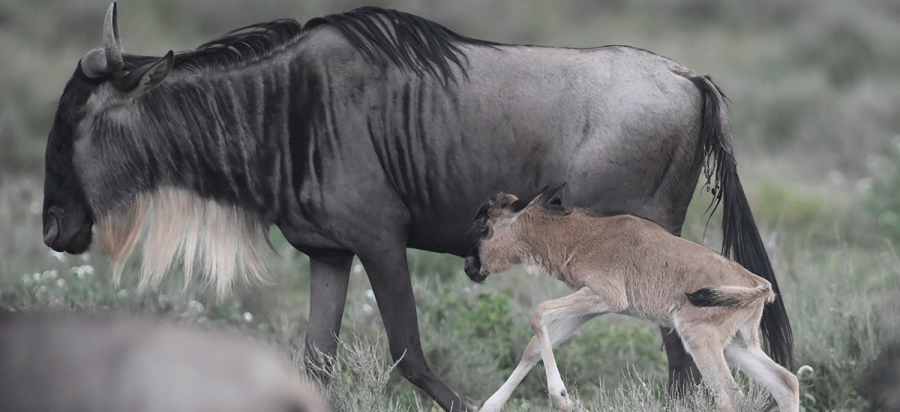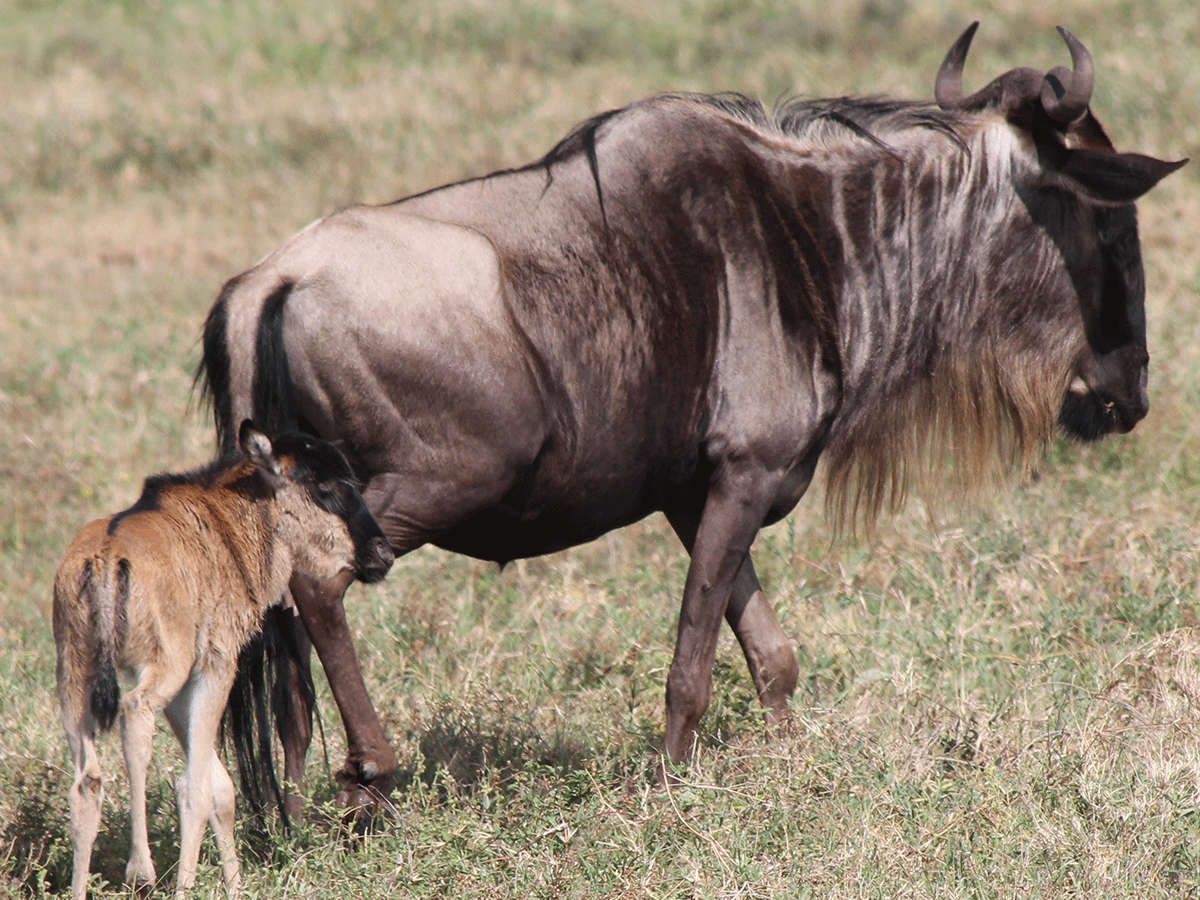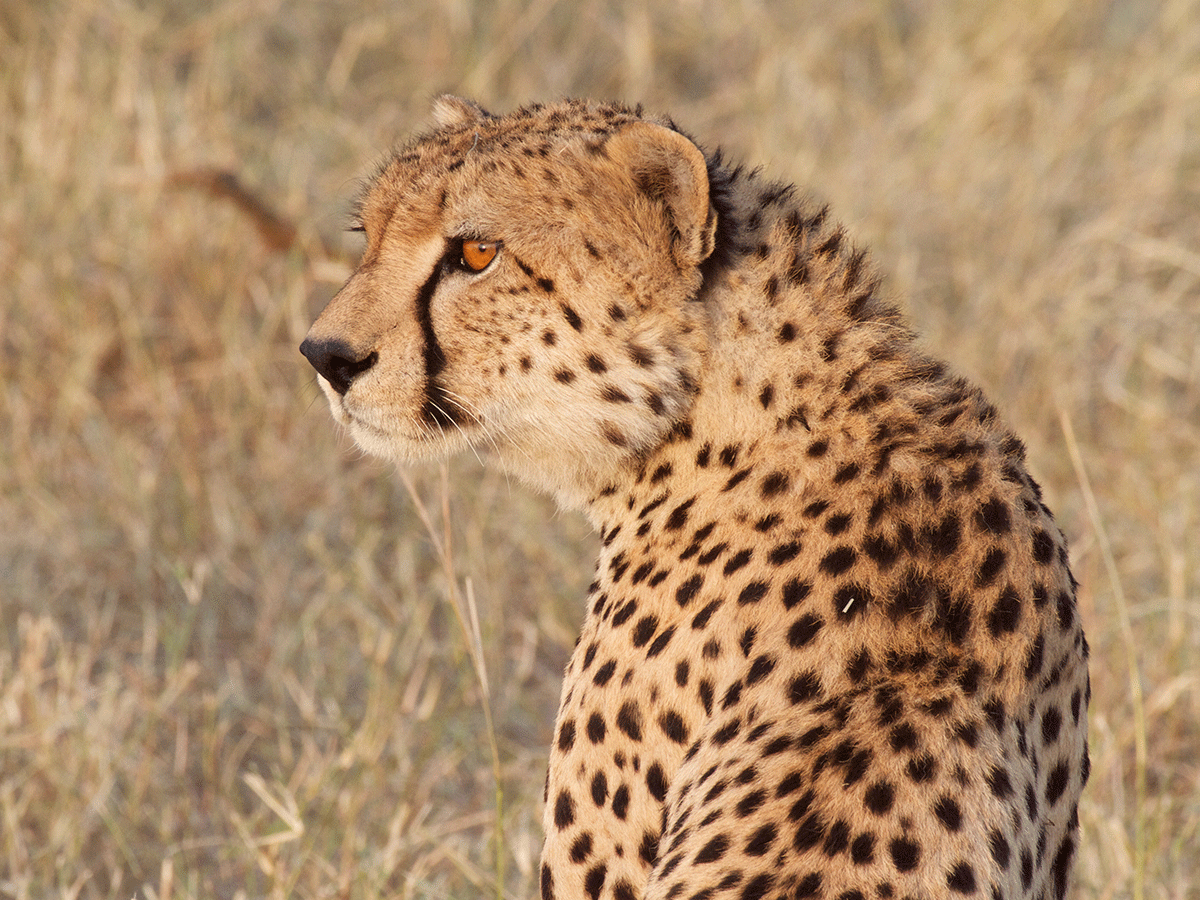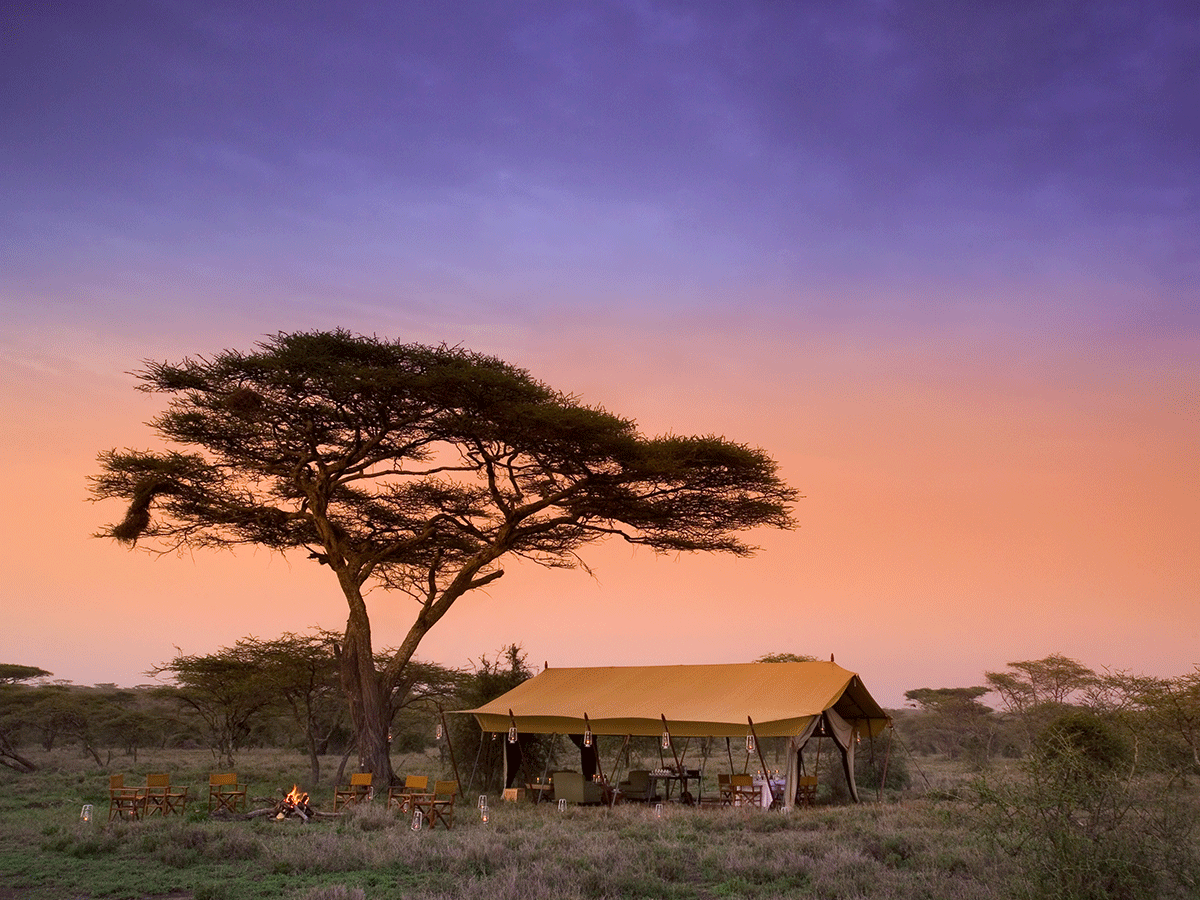Serengeti wildebeest calving season Tanzania
Home » African Safari Destinations » Tanzania Safaris, Tours & Holidays » Serengeti Wildebeest Calving Season Tanzania

Serengeti national park is covered with grassland plains and being in the middle of it offers views of distant landscapes and the only feeling you get is of the typical African wilderness.
It is well known for its world’s largest wildlife migration and a high concentration of big cats like lions, cheetah, and hyenas. The wildlife migration referred to as “the Great Wildebeest migration” is an annual movement of a large group of animals of about 2million, the largest wildlife being the wildebeest some zebras and gazelle that move from Serengeti national park northwards to Masai Mara National Park and back to Serengeti. This migration is one of the prime attractions of the park. Other animals in the park include elephants, leopards, buffalo, giraffes, and many antelopes.
Some of the most epic and spectacular wildlife moments to witness second to the great Mara river crossing is the wildebeest calving season which takes place in the great Serengeti plains from Late January to early March as the wildebeest cows give birth amidst the huge predator presence, due to the low tourism numbers this is regarded as the best safari experience in East Africa.
A typical day of a safari during wildebeest calving season in Serengeti NP
Africa is usually referred to as a destination filled with souls of wilderness sounds, your typical day in the semi-permanent migration camps starts with hearing the sounds of lions, hyenas roar over the plains of the quiet Savannah plains of the great Serengeti plains, this is followed by a wakeup call from the friendly lodge staff and this is quickly accompanied by one of the best coffee or tea with cookies to give you that much-needed energy levels to handle the drama of the day.
A full African breakfast will be available at the lodge but we highly recommend clients to take packed breakfast and picnic lunch as you do not want to miss any part of this wilderness series of wildebeest calving season.
Then you will meet your guide with the classic 4×4 African safari jeep ready to experience a trip of a lifetime and you will be off the adventure.
The birth of the Wildebeest calves
After loading full camera batteries, enough drinks, and the meals in the jeep you will embark on a rock and roll adventure sometimes accompanied by a dusty day out on safari.
After locating the huge herds of the wildebeest you will then sit for quite a while as you watch the drama of sometimes predators approaching and the wildebeest running off in large numbers causing thunder of hooves.
As patience pays on that right time you will see one of the cows push something with legs and blood stains and that will be another wildebeest coming on to earth to start what we call the circle of life in the wild.
Wildebeest calves usually start walking few minutes after they are born though they take some time to pick up normal walking stability.
The wildebeest cows drop their young in a synchronized birthing that sees some 300,000 to 400,000 calves born within a few short weeks, eight and a half months after the wildebeest rutting season between May wildebeest migration pattern and June wildebeest migration pattern.
Action during the wildebeest calving season in Serengeti Tanzania
Many predators are attracted during the wildebeest calving season, some of the easy to see predators include lions, cheetahs, hyenas, and leopards, the wildebeest calves are seen as easy prey for the predators as they cannot stand the pressure of the predators and they are usually left behind by the cows when it comes to the survival for the fittest.
However, some of the scenes on this safari may be heartbreaking but simply nature takes its course, and remember this has been happening for a couple of years in the annual wildebeest migration.
Where to stay during the wildebeest calving season in Serengeti Tanzania
It was February, and we’d come to the Serengeti to see the amazing spectacle of wildebeest calving. Mobile migration camps follow the herds throughout the year and position themselves close to the wildebeest during calving season.
The semi-permanent mobile camps in a remote part of the southern Serengeti usually they are large tents of wood and canvas, offering a true Out of Africa authentic safari experience.
The mobile camps are usually very intimate, with only eight guest tents, each with an en-suite bathroom and a common area for meals and relaxing between game drives in the pic of the day when the heat is high.
With a huge private porch, visitors can enjoy a morning cup of tea or coffee while keeping their eyes on the plains for a game or enjoy an ice-cold drink.
Why travel with Wilderness explorers Africa
Wilderness Explorers Africa is your premier African safari operator specialized in organizing exclusive journeys by design to discover Africa.
January-early March is a spectacular time to come face to face with the endangered mountain gorillas in Rwanda the country of a thousand hills and Uganda the pearl of Africa as this is the dry period of the year before heavy rains start in mid-March to the end of May however the season have greatly changed for more information contact our team of experts before booking the safari.
RECOMMENDED SAFARIS
REQUEST ABOUT A TRIP QUOTE NOW
Fill out the form bellow and remember to be precise and detailed in the enquiry entry.



